
By:
- Erika Johnson
Published Date
By:
- Erika Johnson
Share This:
Ice King
UC San Diego senior and Team USA figure skater Richard Dornbush sets sights on 2018 Winter Olympics
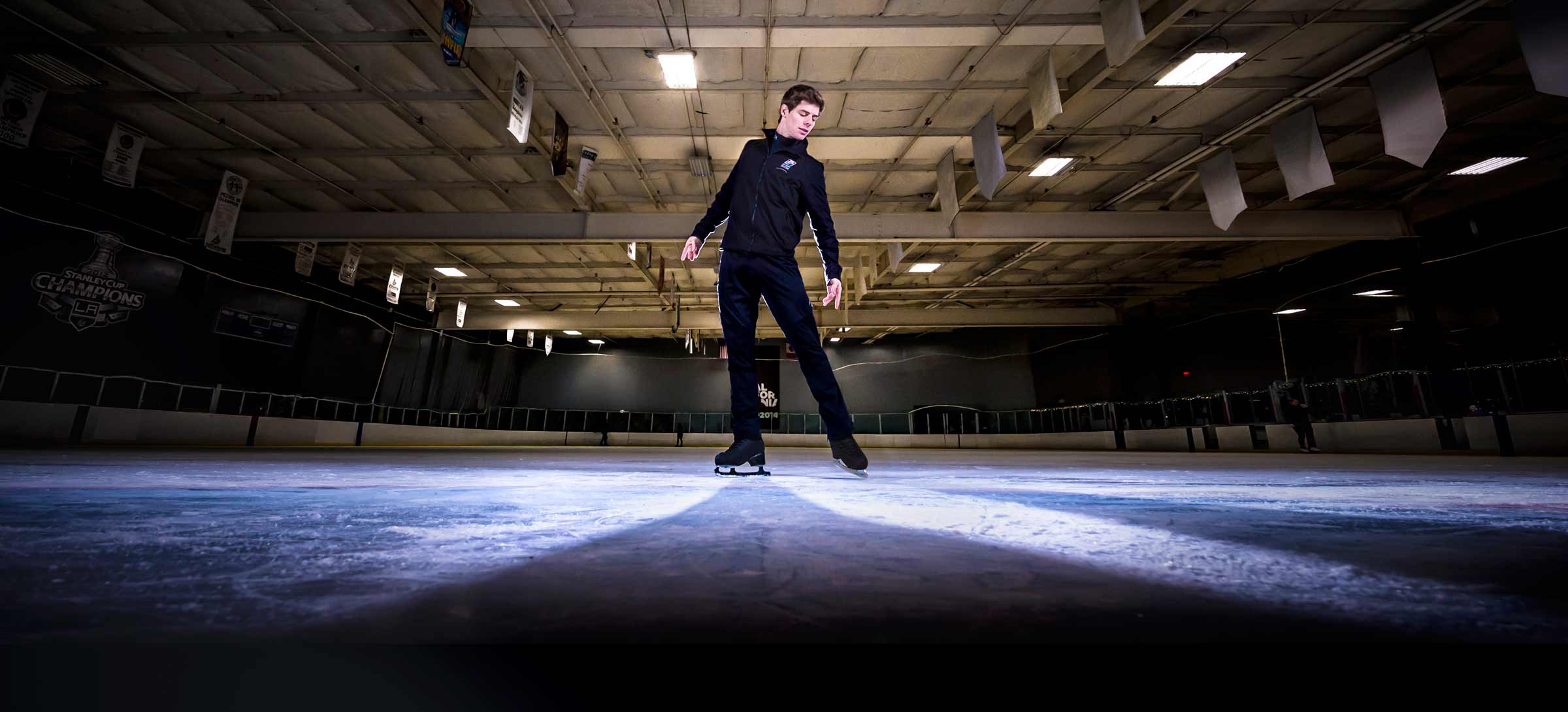
Photos by Erik Jepsen/UC San Diego Publications
Landing a jump on ice takes confidence and skill, not to mention courage. Years of training and preparation culminate in a make-or-break moment that can end in triumph or catastrophe. But the pressure doesn’t get to Richard Dornbush anymore. In fact, he has learned to channel it in order to accomplish his goals, including completing his bachelor’s degree in physics from UC San Diego while working towards qualifying for the 2018 Olympic Games. As part of Team USA, he will compete at the annual U.S. Figure Skating Championships Jan. 22-24 in Saint Paul, Minnesota—and be back just in time for the first round of midterms.
“Education is really important to me, and having a love of learning and desire to be more than just an athlete helps me stick with it and have the determination to do both at the same time,” said Dornbush.“Skating is such a mental game, and all about preparation. I train the same way for a competition as I do for a test.”
Dornbush has been skating since he was 6 years old, and competing for more than a decade at the national and international level. Last year, Dornbush took gold for the second year in a row at the U.S. Collegiate Figure Skating Championships. In 2011, he earned a silver medal at the U.S. Nationals, which earned him a spot at the world championships for the first time, where he took ninth. Since then, he has remained in the top 10 in subsequent national competitions and was chosen as an alternate for the 2014 Winter Olympics.
“The Olympics is what every skater dreams about,” said Dornbush. “To be a runner up in 2014 is really motivating for the next four-year cycle.”
Olympic dreams: defying gravity and expectations
The quadruple toe loop jump is one of the most difficult maneuvers a figure skater can undertake. It requires just the right amount of speed, vertical height and four lightning fast—less than 0.7 seconds to be exact—rotations before making a stable landing on slippery ice. Needless to say, there is little room for error. A successful execution of one of these quad jumps garners high scores in competition, and these days they are an expected program element for top skaters.
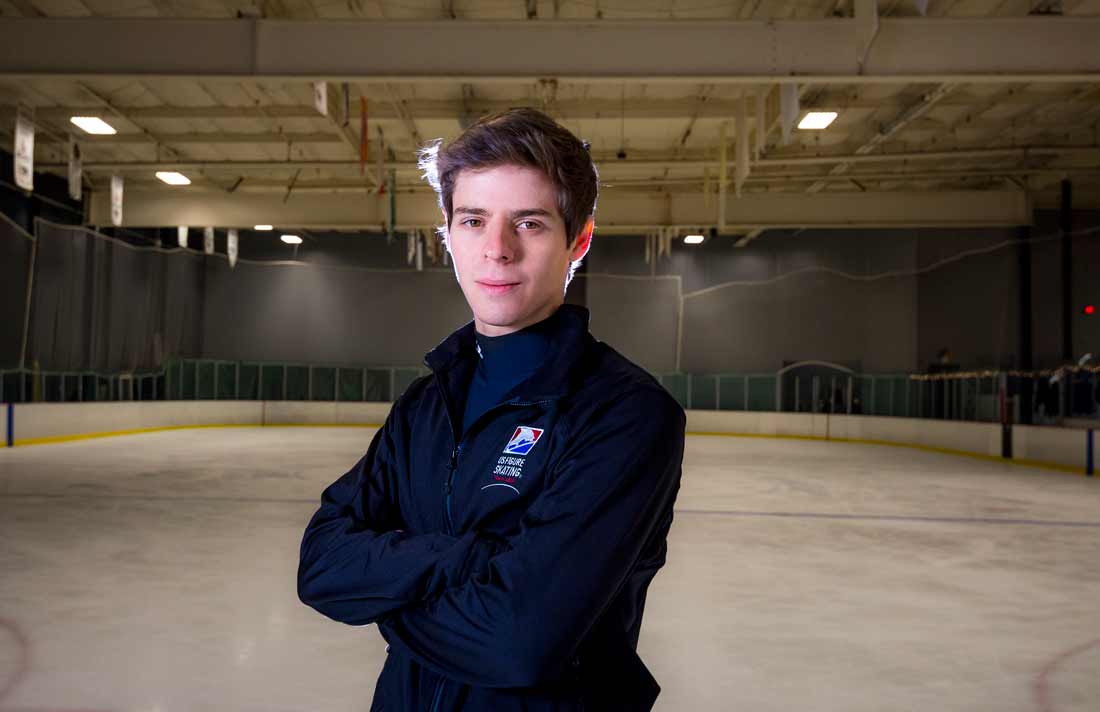
Richard Dornbush
“It takes a lot of guts,” said Dornbush, who has a quad toe loop planned for both his short and long program at nationals. “You have to have really good proprioception, or body awareness. When you are rotating that fast, everything is a blur, so you just have to feel where you are in the air and spot the landing. It can be tricky. You could miss out on points if you over or under rotate.”
While gravity-defying jumps are definitely crowd pleasers, judges scrutinize much more than just a skater’s ability to leap gracefully. Not only does the performance have to display incredible athleticism, from speed and acceleration to clean edges and turns, skaters must also convey emotion and artistry in their flow over the ice and interpretation of the music. According to Dornbush, it is this combination of storytelling and athletic prowess that is the most challenging aspect of figure skating.
“It has to mean something; there’s a story you are trying to tell and an emotion you are trying to convey to those watching—the judges, the people in the audience and those watching on television,” said Dornbush. “It is the most artistic sport, or the most athletic art. There is a fine line between making the routine look difficult and at the same time effortless.”
All of these elements are taken into consideration when it comes time to select members for the U.S. Olympic figure skating team. As part of Team USA, Dornbush regularly competes around the globe, working hard to maintain high scores at national and international competitions. Last fall, he participated in the Cup of China in Beijing and NHK Trophy competition in Nagano, Japan as part of the International Skating Union’s Grand Prix competition series.
According to Dornbush, it isn’t just talent or even hard work that has gotten him to where he is—but perseverance. For the past decade, he has sustained a rigorous competition training schedule in between keeping up with his academic obligations at UC San Diego.
Team Dornbush: training for the top spot
Dornbush was just 6 years old when his mother first enrolled him and his three older sisters in figure skating classes at a new ice rink that opened near his hometown of Corona, Calif. He soon began to excel, and eventually signed on with figure skating coach Tammy Gambill. Eighteen years later, he still trains several times a week with Gambill at IceTown Riverside.
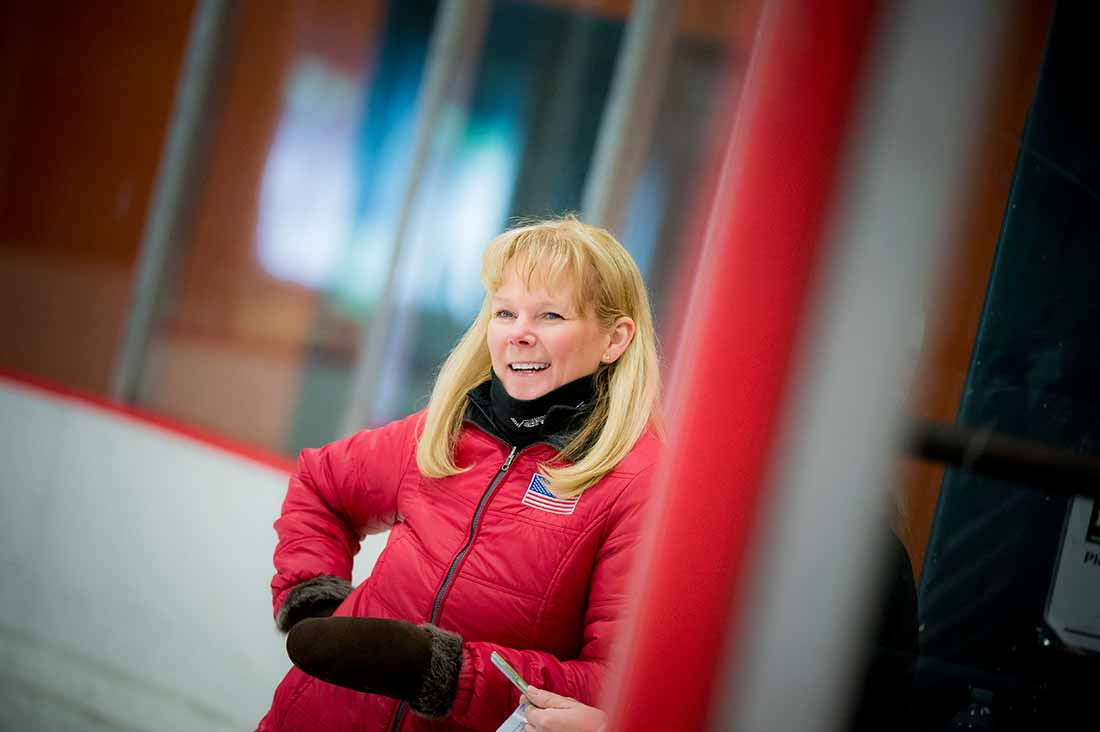
Tammy Gambill
“Ricky started in one of my group lessons; he was just this cute little boy who liked to skate fast, so we went from there,” said Gambill, who has been coaching Olympic potentials and skaters at the national and world level for more than 30 years. “It has been really fun for me to watch him grow from a little boy to an adult, to see him develop as a person and as a skater.”
Working around his class schedule, Dornbush manages to travel to Riverside at least four days a week to complete 12 hours of practice on the ice, in addition to the other 12 hours a week he spends at a local rink in Carlsbad. Perfecting a new routine takes at least three months, fine tuning each detail until everything just clicks with ease. Each year, he prepares a short and a long program, the first a compilation of required technical elements lasting two minutes and 50 seconds, and the other a four and a half minute freestyle routine to showcase his skill and unique flair.
“Ricky is a great all around skater; he has wonderful edges, a great presence on the ice, and is a fantastic jumper and spinner,” says Gambill. “He’s such a hard worker; he always gives me a hundred percent. Even if he has an off day, I know he is trying as hard as he can. Next year is the qualifying year for the Olympic team. He’s got the potential to do it; he just needs to stay healthy while he is training.”
In addition to working with Gambill, Dornbush also practices with figure skating coach Jonathan Cassar at IceTown Carlsbad; choreographer Mark Pillay in Vancouver, Canada; several off-ice conditioning trainers; as well as athletic trainer Kevin Messey, ATC, with UC San Diego Health’s Sports Medicine Program and a sports psychologist with UC San Diego’s Counseling and Psychological Service (CAPS).
Every hour spent on the ice is nearly matched by time spent in the gym to increase strength and agility, as well as cardio workouts and flexibility training through yoga and dance.
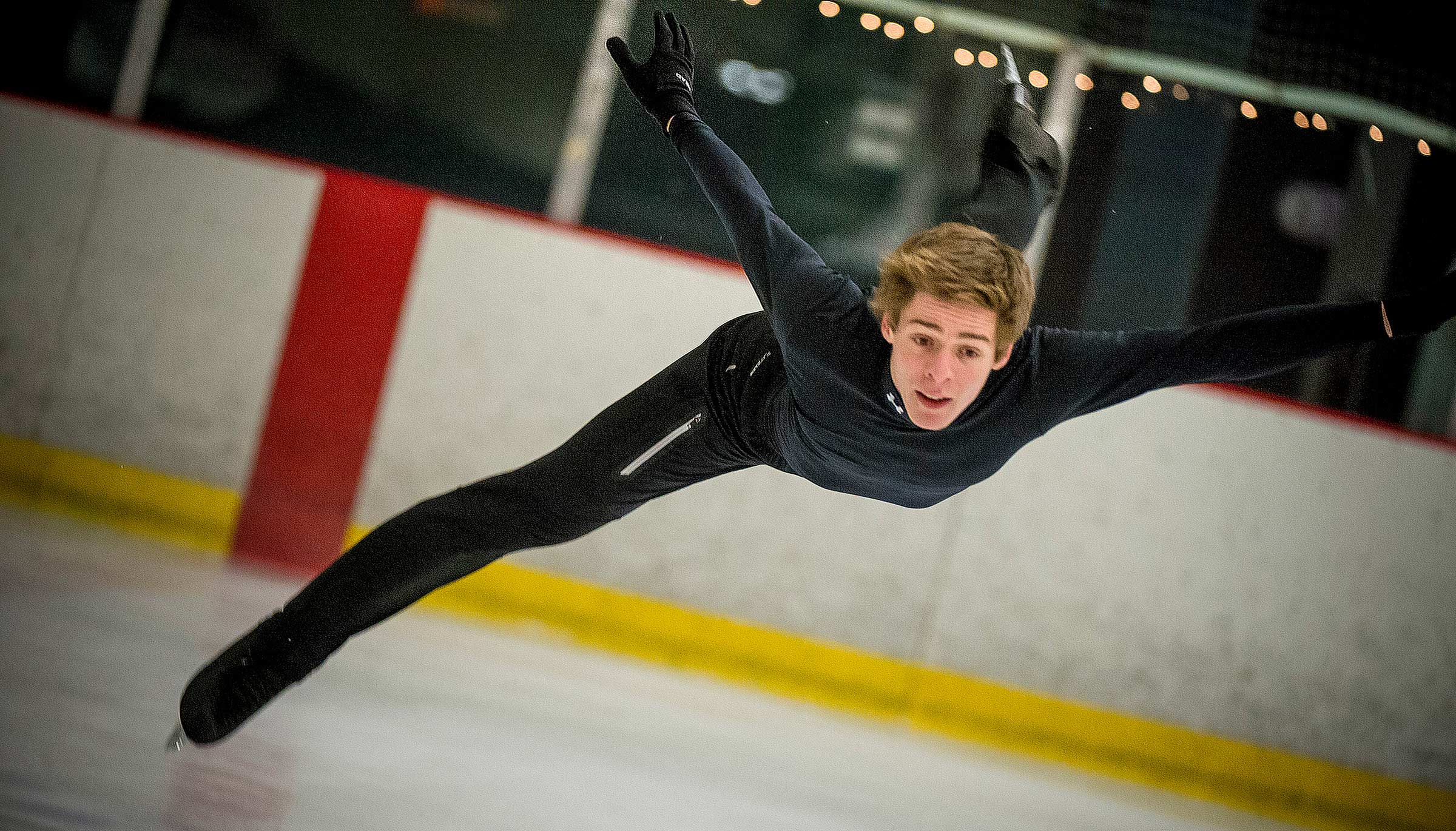
“Figure skating is really tough to train for off-ice because when you are out there it’s all body weight; there is no physical presence required except for when you have to manipulate yourself into jumps and spins,” explained Dornbush. “You want to generate powerful movements but you don’t want to have too much bulk because that will slow you down, especially when it comes to rotating in the air.”
In the same way that Dornbush commits to training consistently for a competition to perfect his routine and prevent injury, he puts the same effort into being the best student he can be.
The perfect equation: balancing school and skate time
When he isn’t on the ice, Dornbush is contemplating mathematical equations. A Warren College senior, he transferred from Riverside City College and is studying computational physics. After he graduates in 2017, he plans to earn a master’s degree and pursue a career in finance focusing on quantitative analysis. He is interested in using computer systems to solve complicated financial problems through simulation models and brute force analysis.
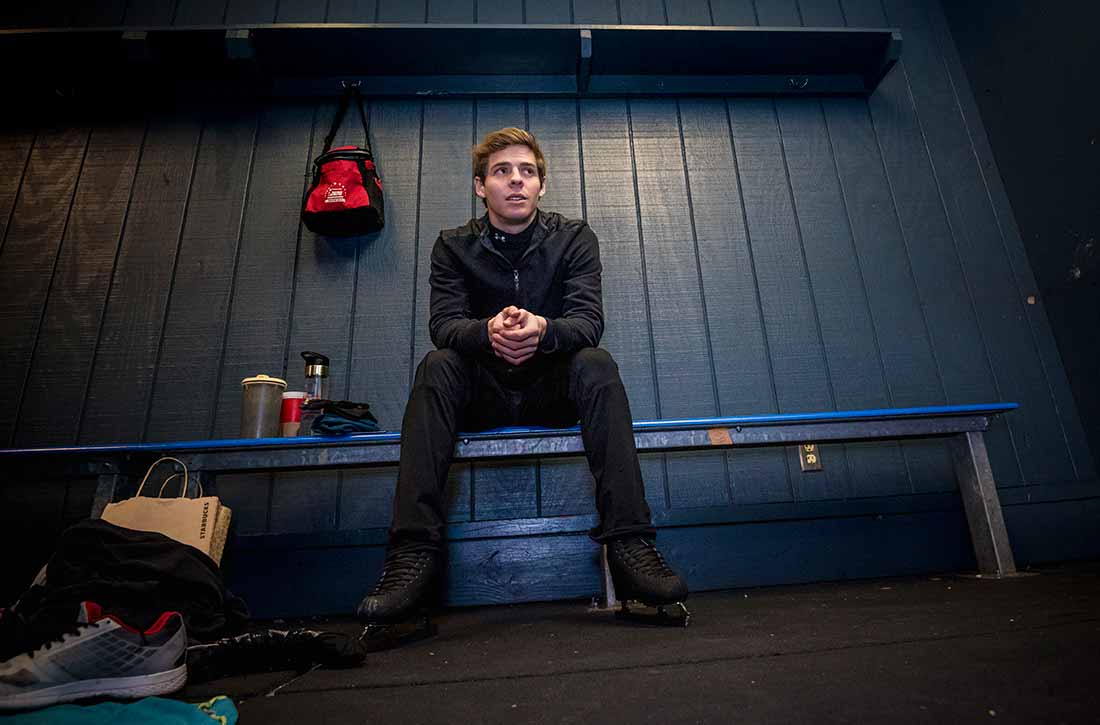
Each quarter, he chooses a flexible schedule of classes that will enable him ample time to travel to regular training sessions in Carlsbad and Riverside. When international competitions happen, he relies on the support of classmates to keep him in the loop on coursework and professors who are willing to arrange for alternate testing schedules.
“I apply the same training mentality to skating and school,” said Dornbush. “I’ve learned that preparation doesn’t take place last minute, and cramming doesn’t work in the long run. I start early enough to know that I will be confident under pressure—whether it’s for a test or a skating competition.”
As for whether studying physics gives him an edge on the ice?
“Everyone always asks if physics helps me skate better,” says Dornbush. “I’m not calculating my trajectory as I’m jumping and I don’t have a chalkboard on the ice full of equations. I think I have just gained a greater appreciation for the crazy forces that go into skating.”
Share This:
You May Also Like
Stay in the Know
Keep up with all the latest from UC San Diego. Subscribe to the newsletter today.


